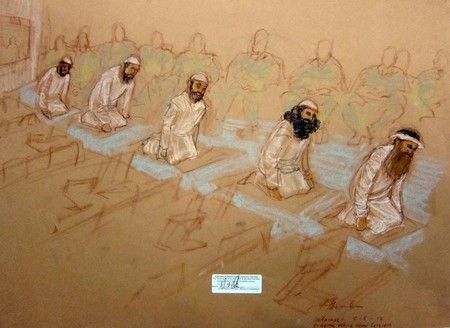Politician Played a Role in One of the Worst Prison Riots in History

Prison riots are not altogether uncommon; after all, prisons are full of prisoners and prisoners don’t have too much affinity for the law. Still, most riots are easily subdued, resulting in a few bumps and bruises but not major damage or death. Then there’s the riot that occurred at the Oklahoma State Penitentiary in 1973. To this day, it’s one of the worst in history.
The Oklahoma State Penitentiary is an old prison, opening all the way back in 1908, the same year the Chicago Cubs won the World Series (yep, it’s that old). Originally, it was quite roomy, with 1,500 acres housing only 50 inmates in McAlester, Oklahoma.
In 1911, things changed and a more permanent facility opened. An influx of prisoners followed, giving people much less personal space. By 1920, more than 1,100 inmates walked the grounds. And the numbers continued to grow. Five decades later, the prison was past capacity, with more than 2,200 people locked inside. The conditions suffered from every jailbird added and everyone grew weary and restless. Compounding the issue was a stubborn politician. Governor David Hall refused to sign parole recommendation for drug offenders, keeping the numbers high and the prisoners unhappy.
The riot occurred on July 27, 1973, as a group of inmates stabbed two prison workers and took another twenty-one guards and inmates hostage at knifepoint. Within three hours, the prisoners gained control of the hospital and, not long after, set parts of the prison on fire.
The prisoners were not shy in their demands: they wanted amnesty for the riot’s ringleaders; media coverage of their actions; and access to attorneys from the U.S. Justice Department and the American Civil Liberties Union. They eventually released the hostages, freeing them on July 28. However, they didn’t release the grounds: they kept control of the prison until August 4th.
The riot resulted in a great deal of destruction, both to structures and to people. More than $25 million dollars in damages occurred in over twenty buildings. By today’s monetary values, that’s over 135 million dollars. Three inmates were killed by beatings and stabbings. Twenty-one inmates, as well as prison guards, were also injured.
In the months following the riot, a special task force met to decide what to do with what was left. Ultimately, it was determined that the Oklahoma State Prison would function as a maximum-security facility only, rather than one that mixed drug offenders (and other nonviolent inmates) with people imprisoned for rape and murder. The number of prisoners was also slotted for reduction, all the way to 300-500 inmates only. Finally, the prison guards were scheduled to become better trained and compensated.
Despite these ideals, the provisions set forth were never completely implemented and little changed for those living in the facility. It took a lawsuit to earn the inmates better housing, more comprehensive medical care, and a stronger focus on safety. Even so, another riot occurred a little more than a decade later in December 1985. This time, three guards were stabbed and seven inmates and officials taken hostage.












